







































 |
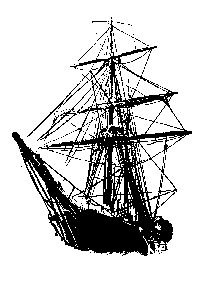
Time Line
The Explorers
Operation Highjump Story
Highjump: Antarctic Mayday
Highjump: Photo Gallery
Heroic Era Postal History
Byrd I, II, III Postal History
Highjump Postal History
A Philatelic Introduction to Highjump
USS Mt. Olympus | USS Yancey | USS Merrick | USS Sennet | USS Burton Island | USCGC Northwind | USS Currituck | USS Henderson | USS Cacapon | USS Pine Island | USS Brownson | USS Canisteo | USS Philippine Sea
Windmill / Deepfreeze Postal History
 Deepfreeze Cancellations Deepfreeze Cancellations
McMurdo | South Pole | Byrd Land
Little America | Christchurch
Modern Postal History
The Stamps
US Antarctic Philatelic Program
 South Pole Millennium Covers
South Pole Millennium Covers
 The Old South Pole Story
The Old South Pole Story
The peri-Antarctic Islands
Maps
American Society of Polar Philatelists
Websites of Interest
Webmaster
Table of Contents
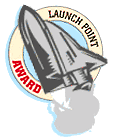

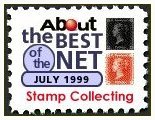
Find out-of-publication books here!




Sign my Guestbook
View My Guestbook
Last modified on
August 29, 1999
|
Welcome
to the Antarctic Philatelic Home Page. This site is dedicated to the
stamps, postal history and heroic explorers of the great white continent
and its surrounding islands. Extensive work has gone into the creation
of this site and updates are frequent. The intention here is to provide
noteworthy data, not limited strictly to philately, but also useful
reference material for students researching the history of early exploration
in the southern latitudes.
The
early explorers made sojourns to the southern seas solely for commercial
reasons, some of which, incidentally, made new discoveries. The majority
of these voyages, along with the highest development of the whaling
and sealing industry, came in the nineteenth century when operations
took place in every ocean of the world. Many of the peri-Antarctic
islands were discovered by sealers or whalers and the first landings
on half of them were made by men engaged in the whale and penguin
oil industry. A particular problem with many sealing voyages was the
secrecy with which the industry was conducted; should a captain and
crew discover a new sealing area, they normally concealed its location
in the hope of having no competition when exploiting it on subsequent
voyages. The early sealing industry declined as the population of
Fur seals and Elephant seals were reduced to such an extent that the
industry became virtually unprofitable.
The
second major exploitation of Antarctic resources began in 1904 with
the establishment of the modern whaling industry. At various times
shore stations operated in the Falkland Islands, South Shetland Islands,
South Orkney Islands, South Georgia, Iles Kerguélen, Macquarie
Island and Campbell Island; "floating" factories were moored at these
and several other locations.
In July 1895,
the Sixth International Geographical Congress was held in London for
the primary purpose of rekindling interest in Antarctic exploration.
This is generally referred to as the beginning of the Heroic Era
of Antarctic exploration, dating from Adrien
de Gerlache's Belgica Expedition in 1897, extending to
Richard Byrd's Little America Expedition
in 1928.
 Postal
history examples prior to the turn of the century are exceedingly rare
and are coveted by polar philatelists worldwide; it is from the turn
of the century that the postal history becomes available to most of
us. Illustrated here is a postal history example from the Heroic
Era: from a set of four Links of the Empire postcards, printed
for Robert Scott's expedition, comes this
commemmorative postcard cancelled by hand in London on July 31, 1901.
. . the day Discovery left the London Docks and slowly wound
her way day the Thames launching the start of the historic Discovery
Expedition. Postcard publishers E. Wrench, of London, advertised
the four cards for a subscription price of two shillings (10p), with
each card receiving a postmark from a suitable port of call. Postal
history examples prior to the turn of the century are exceedingly rare
and are coveted by polar philatelists worldwide; it is from the turn
of the century that the postal history becomes available to most of
us. Illustrated here is a postal history example from the Heroic
Era: from a set of four Links of the Empire postcards, printed
for Robert Scott's expedition, comes this
commemmorative postcard cancelled by hand in London on July 31, 1901.
. . the day Discovery left the London Docks and slowly wound
her way day the Thames launching the start of the historic Discovery
Expedition. Postcard publishers E. Wrench, of London, advertised
the four cards for a subscription price of two shillings (10p), with
each card receiving a postmark from a suitable port of call.
Following World
War II, a war-weary and economically challenged world began seriously
contemplating new problems . . . problems escalating in a climate of
uneasy peace referred to as the Cold War. In November 1946 the U.S.
Navy launched the largest Antarctic expedition ever organized. Code-named
Operation Highjump, Rear Admiral Richard
E. Byrd led 4700 men, aboard thirteen ships with twenty-three aircraft,
on the Antarctic Developments Project 1947. As Byrd said, "The object
lesson of all this is obvious. The shortest distance between the new
and old worlds is across the Arctic Ocean and the north polar regions.
It is freely predicted that here will be one of the great battle areas
of future wars". The first American casualties in Antarctica came in
a tragic PBM Mariner "flying boat" crash on Thurston
Island, southwest of Peter I Island, during this expedition. For
the first time ever, a full account of the tragedy, as experienced by
a crash survivor, is told here in completeness. Be sure to read Antarctic
Mayday, a compelling story of courage and faith. The whole story
of the expedition is presented here, along with a treasure chest of
postal history information.
As you travel
through this site you will see extensive historical data presented to
enhance your appreciation for this highly specialized area. The stamps
certainly are a part of this adventure and you will find tables within
that will provide printing statistics on many of the early issues, commencing
with the Falkland Islands Dependencies.
A significant
amount of new material is being added as time permits. Research, in
depth, has gone into the various ship and base cancellation types of
Operation Highjump and Deepfreeze, with additional information still
on the way. I wish to personally thank Joe Lynch, Jr. and Scott Smith,
fellow members of the American Society of Polar
Philatelists, for their generous contributions and research provided
to this website, the official website for the ASPP. In the future, this
site will be expanding to include our polar friends to the north: the
Arctic. Similar material will be displayed in this collecting area for
your viewing and research pleasure.
I would be grateful
if you could find the time to sign my guestbook!
This site will continue to grow as I've really only scratched the surface.
Your comments would be most welcome.
So, I invite
you to come and explore and hopefully you'll return another day, for
another look, at another era.
The Webmaster
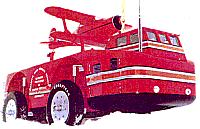
Web
Hosting Courtesy of
North Cascades Networking,
Inc.
|












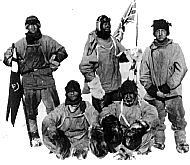











































 Deepfreeze Cancellations
Deepfreeze Cancellations South Pole Millennium Covers
South Pole Millennium Covers
 The Old South Pole Story
The Old South Pole Story





